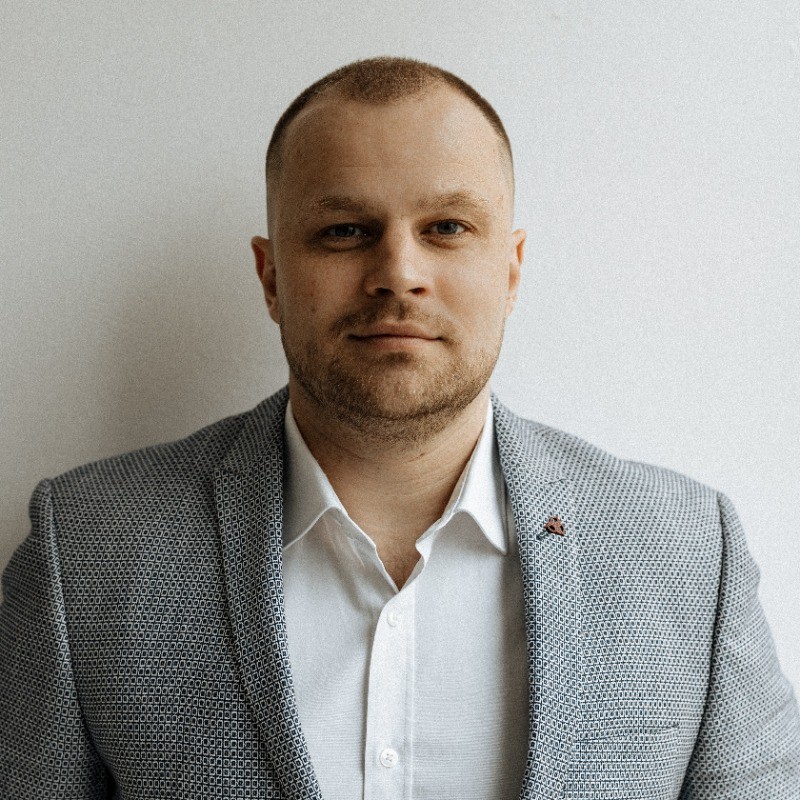Table of content
Although this is a common situation, it decreases the project manager’s productivity. Multitasking is proven to be wrong. It negatively impacts working memory, general executive functions, and reasoning.
No matter that managers may still spend up to 60% of their work merely guiding the processes. Context switching tax is becoming way too high, so that would be great to include it in the project budget!
In this article, we will discuss some of the challenges project managers face and how they can address them. Devox Software experts will share techniques and tools for managing multiple projects with you.
Challenges in Managing Multiple Projects
Multiple project management can be stressful, but it doesn’t have to be. If you can prioritize your goals, focus on your core tasks, and meet the requirements of each project as it arises, you will succeed. In addition, having multiple projects on their plate is an inevitable step for professional growth.
You will have to allocate your time and energy to different projects and ensure that they are on track with all of them without any hiccups in between.
Based on the project management triangle, pretty much all the challenges fit into one of the three categories:
- Time management challenges. Examples of such a challenge are an underestimation of backlog items, periods of system downtime, or a struggle to find an appropriate time slot for the meeting.
- Resources management challenges. It could be an urgent need to replace someone from the team or a decreasing budget.
- Scope management challenges. This is about situations where you suddenly realize that team has built the wrong feature or when stakeholders keep requesting new functionality, but human and time resources are fixed.
In the next section of this article, you will learn how to address these challenges.
Manage Multiple Projects: Step-by-Step Tips
First of all, remember that each of the projects passes the same stages. What about principles that will help with balancing multiple projects at once? Project management theory by Project Management Institute defines five of them.
Our team is going to point out the best way to keep track of projects for each of them:
1. Initiation
When managing multiple projects, clarity and transparency are crucial to success since they save time on further frequent follow-ups. Initiation is a stage where you have to define your idea, present it to the project sponsor and other stakeholders and get approval. During this phase, you will determine high-level requirements, initial budget, and timing.
Project managers are expected to outline project deliverables that meet the stakeholders’ expectations and set measurable metrics to achieve. In further phases, they are accountable for product quality and resource management. However, achieving these deliverables is more than the project manager’s responsibility. Every team member is equally responsible for the final result.
Involve your stakeholders
Try to build trustful and credible relationships with both external and internal stakeholders. They should not be strangers to your team. Invite them to Sprint and Increment Reviews whenever possible. Ensure that they are heard and that their feedback has impacted the product. The stakeholder matrix will help you manage their requests by priority.
2. Planning
After project requirements and stakeholders have been defined, the team steps into the planning phase. At this stage, the team thinks about how to split high-level goals into smaller milestones. Also, at this stage, you must capture all project requirements and schedules for future use.
It is impossible to plan everything and eliminate 100% risks if you are not a fortune teller. But here is what you can do to make your planning phase more effective:
Keep project planning tools consistent.
Consider tracking multiple projects’ timelines using the same tool. Then, when all the deadlines are in one place, you will not miss a thing or set up conflicting deadlines.
Another catch is that overusing many different tools will negatively impact productivity and creative thinking. According to a Workgeist report, 43% of workers find it difficult to switch between their company’s apps and tools, and 45% admit that it makes them less productive.
Think of an offshore team.
Teams working in different time zones will keep your project constantly running and maintained to cover risks of unexpected emergencies. Consider this list of top countries to outsource software development created by Devox Software experts. We also offer a large pool of talents that may join your team within several cooperation models.
Remember to allocate time for planning activities.
In Agile projects planning iterations takes place regularly. According to Scrum theory, Sprint Planning may take up to 2 hours for one week of the Sprint. It results in 8 hours per month, which equals a full business day for each team member spent on planning!
Be mindful of cultural diversity.
If working with distributed teams, think of national and religious holidays, which may differ among countries. By planning them, you will not miss this when setting up a critical release date.
3. Execution
The execution phase examines how to organize multiple projects at work. Executing a project means getting from plans to tasks toward realization. At the same time, you must keep timings, budgets, and change requests in mind. Here is where all three types of project management challenges appear.
Become a guru of prioritization
Consider different prioritization models and choose one that solves your issue. There is a bunch to choose from: Value VS complexity, Value VS Risk, MoSCoW, Kano model, etc.
Time management 2.0
It is much more than just creating to-do lists with due dates. Try time-blocking, which means grouping tasks of the same type into categories and allocating them to dedicated time slots. That will reduce context switching and save a lot of mental resources.
Are you having a bunch of emails after the weekend? No problem, let Monday morning always begin with mailbox review and texting back. Just book the first couple of hours in your calendar to have some no-interrupted time for it.
You do not need a Time-Turner to Manage Multiple Projects
The world will not collapse if the project manager misses a meeting. You do not need to reschedule meetings repeatedly to be on each. Ensure that someone from your team will drive it and ask to record a session or post-meeting notes. Win-win!
Cross-functional teams are gold
In an ideal world, teams are cross-functional, and each team member is replaceable in both short- and long-term perspectives. To make it possible, hire engineers with a broad skill set. Full-stack developers are a great choice. Devox Software advocates for cross-functional teams and offers dedicated development teams and individual skilled IT experts that may join your team at any project stage.
Also, ensure that there is no single technical system owner and knowledge accumulator among the development team. Everyone needs to know what is happening on the project even though there are parts one is not much involved in. Knowledge transfer sessions within the team will help you with that.
Automate
Whenever possible, automate your routine. This could be something to do with setting regular notifications for your team and even bots for your corporate messenger. This trend is relatively new, but its potential is truly awesome! Bots are customizable. With their help, you can automate, for example, daily standup or team polls and let a single click in Slack or Google Chat launch them.
Create instructions
Create detailed instructions if you have typical processes that still need to be automated. Post these checklists in a shared team space and ensure everyone is aware of them. It works great for onboarding and offboarding new team members, release planning, vacation approval, etc. It will make people and processes work without a project manager.
4. Monitoring
Progress report as a tool that will save you lots of time. To increase its effectiveness and grow your benefit, ensure your teammates frequently report and at equal periods so that you will always have up-to-date feedback and more room to adjust.
Do not be a micromanager
And ensure that no one of your teammates does. To prevent micromanagement, make sure that teamwork is transparent enough. Everyone should have an idea of who does what. Jira and its analogs allow one to monitor individual performance and view historical data.
No need to report for the sake of reporting
Trust your team, and do not charge exhaustive hourly reports. It will not only save them time but also will keep them more self-organized and motivated. Instead, keep an eye on team performance metrics within your project management tool and let them get work done.
Numbers speak
Wherever possible, visualize numbers into charts and diagrams. Modern project management software allows creating not only charts, but project management interactive dashboards! Invest some time to play with them, and the quality of your reporting will improve a lot. They speak to the project sponsor in a more effective way than the oral assurance that the project and team are doing well.
5. Closure
The closure phase is a time to say goodbye and conclude all project activities: prepare support documentation, user manuals, test suites, and reports. It is time to think about what went well and what was not so good.
Not just closure but deep self-reflection
You will never have the same team and objectives passing through the same circumstances twice. Each project is unique so pay attention to learning from your mistakes. One day you may incorporate this experience elsewhere, saving you time and effort.
Feedback is a king
Getting a review of the final result of your work from stakeholders is intriguing. Learning about first-end users’ reviews is exciting, too. Pay attention to all sources of feedback. They would become the base for the next product features and enhancements.
To conclude, slightly improving each aspect will make your project management experience more smooth and more pleasant. Finally, remember to celebrate your success and reward yourself!
5 Types of Tools for Managing Multiple Projects
You do not need to have tools for any occasion. Remember the 80/20 rule, where 80% of the outcome comes from 20% of the effort. It is the same with tools for managing multiple projects. You will only require one tool of each type to squeeze maximum value.
Glow Up Your Project with Devox Software Talents
We hope that you found our multiple project management tips helpful.
It is important to note that there is no one size fits all solution for project management. It all depends on what kind of work you do and how many resources you have. Our specialists are eager to consult you at any stage of your software development project or join your team.
Be enthusiastic, learn from your mistakes and let Devox Software make your software development project an exciting journey.














![Why Hire A Remote Team In Ukraine? Interview With CURE Media Tech Lead [VIDEO]](https://devoxsoftware.com/wp-content/uploads/2023/02/steve-johnson-bxUU1CGCatU-unsplash-1024x576.jpg)